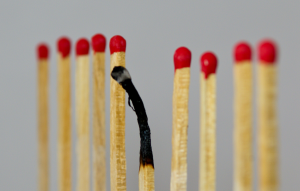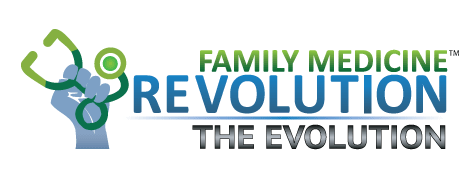 When a friend of a friend of mine committed suicide recently, it hit me harder than I would have imagined. I didn’t know the man and knew little about him other than that he was an emergency medicine resident and a member of the gay, lesbian, bisexual and transgender community.
When a friend of a friend of mine committed suicide recently, it hit me harder than I would have imagined. I didn’t know the man and knew little about him other than that he was an emergency medicine resident and a member of the gay, lesbian, bisexual and transgender community.
When I learned of his tragic passing, I went back and read something he had posted on social media a couple of years ago that stood out as particularly poignant: He wished he could be more proud to be a gay physician and support others who struggle with self-doubt.
Roughly twice as many physicians experience emotional exhaustion as do adults in the general working population.
The pressures of our profession can be stifling, especially for folks who are hesitant to be open about who they really are. Although each of us faces our own set of circumstances and personal needs, the rate of emotional exhaustion among physicians is about twice that of the general working population. Some theorize that too much empathy can induce compassion fatigue, leading to irritability and uncompassionate treatment of those closest to us. Unfortunately, the consequences of burnout are steep. We lose a doctor a day to suicide. But with proper tools and vigilance, we can help foster wellness and prevent medical student and resident burnout, depression and suicide.
Simultaneously, we can’t ignore the many systemic failures that contribute to burnout, including disrespectful behavior that erodes empathy, curricula that don’t emphasize social responsibility and engagement, and the unwieldy demands of electronic and paper nuisances.
As our vernacular shifts from a mutually exclusive “work-life balance” to a more holistic “work-life harmony,” future physicians can find ways to mediate and integrate multiple commitments while bolstering our resolve. One of the paradigms I came up with recently is the acronym PROBE, which stands for Prioritization, Reflection, Organization, Burnout prevention/mitigation and Expectations. The elements of PROBE may help physicians recognize mild to moderate burnout and do better for themselves, their colleagues, and their patients by exploring some of the suggested tools. However, I would implore anyone who is experiencing severe burnout to set aside any perception of the condition as “a weakness” and to promptly seek the help of other professionals.
- Prioritization — Pamela Vaccaro, M.A., outlined the idea of the 80/20 rule, which states that 20 percent of your efforts provide 80 percent of the results, in a 2000 Family Practice Management article. She recommended engaging in activities that advance your overall purpose in life. I would suggest this includes developing a shared vision of the future with those closest to you.
- Reflection — Simply by checking in, you can bring awareness to a difficult moment. Apps such as Headspace may help with increasing the regularity of this process, and the MySelfCare.org quiz might help you gauge compassion fatigue. My fellow AAFP Board member Lynne Lillie, M.D., wrote an excellent post on mindfulness meditation a few weeks ago. Progress can be made by monitoring and measuring what you’re doing. Debriefing with fellow residents, a partner and/or faculty are great ways to decompress after tough situations. My residency holds monthly sessions (based on Balint group structure) during which residents share patient stories and tips for dealing with stressful situations. Surgical residents at Stanford University developed a comprehensive Balance in Life program that includes faculty mentors, healthy food, stress management and social events.
- Organization — One’s (digital) house is a reflection of one’s inner mind, so working to relieve a cluttered inbox, keeping a repository of readings (e.g, on Google Drive, Dropbox, or using the free AAFP app for podcasts and FP Essentials issues), and learning time-saving tricks to use in your electronic health record system can all help you to be more efficient in your day-to-day tasks. This, in turn, may have the egosyntonic effect of giving you more time to enjoy the pleasures in your life.
- Burnout prevention and mitigation — The Resident Doctors of Canada recently released a Mental Health Continuum pocket card for personal burnout awareness and mitigation that details a spectrum — healthy > reacting > injured > ill — with each category listing actions to take and coping skills (e.g., visualization, goal setting, positive self-talk, tactical breathing) to use. The AMA’s STEPS Forward collection has an online module highlighting six key aspects for resident wellbeing and the AAFP maintains a list of burnout resources. Finding what works for you in the moment is crucial to avoiding pent-up frustrations that can inevitably release in very unhealthy ways.
- Expectations — These can be set unreasonably high, leading to unattainable goals. Talking with those with experience in this area may help in setting reasonable expectations, and you may uncover some wise advice for how to avoid pitfalls. It’s also important to guide expectations of family members and friends so you don’t disappoint them. Whether it’s a new job, a new rotation or a new project, setting your own goals can help you come away with a sense of self-growth.
Hopefully, this acronym will help you PROBE the issue of wellness in a systematic way and lead you to contentment in this healing profession. We have a long way to go to prevent the devastation of burnout in our profession; let’s work together and take care of our own.
Richard Bruno, M.D., M.P.H., is the resident member of the AAFP Board of Directors.
